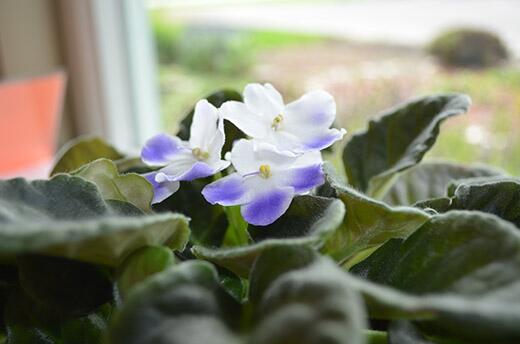Empowering indoor flowering

URBANA, Ill. – Light is essential to all plants, indoor and out.
“It is easy enough to spot plants that aren’t receiving enough light to grow, but what about flowering, which is promoted by light sensitivity in plants?” said Andrew Holsinger, University of Illinois Extension horticulture educator. “The type of plant and its location in the house are important for the ability to flower.”
The light requirements for indoor flowering plants are often overlooked, although these plants often have the highest light requirements. The additional light provides the energy necessary to produce flowers.
When keeping plants indoors, exposure to artificial light is often enhanced by natural sunlight from a nearby window. The placement of the plant near the brightest window will probably be the ideal situation, but the exposure and distance from the window will vary depending on the light requirements of the plant.
“When it comes to providing light to indoor plants, it is practically impossible to provide too much light,” Holsinger said. “The challenge is finding a fashionable way to provide light that adds to the room decor.”
Managing a plant’s growing environment provides a better chance for it to thrive and flower. “Many factors can hamper floral production, including rapid temperature fluctuations, lack of uniform or adequate soil moisture, low humidity, and insufficient light,” Holsinger said.
Photoperiod should also be considered when choosing indoor flowering plants. Some plants respond to short days or flower when day length is less than 12 hours. Others are long-day plants and flower when day length is more than 12 hours. In addition, some plants flower regardless of day length and are called day-neutral plants.
Photoperiod is determined not by the length of the day, but the amount of uninterrupted darkness. Manipulating the darkness by isolating the plant in a dark closet or by covering it with a box for a specific duration every day is one way to encourage flowering in photoperiod-dependent plants.
“Another type of plant requires temperature regulation for flowering,” Holsinger said. “Bulbs forced inside have a chilling requirement to be met before bloom can occur. Similar to day-neutral plants, there are some bulbs that flower regardless of the amount of chilling.”